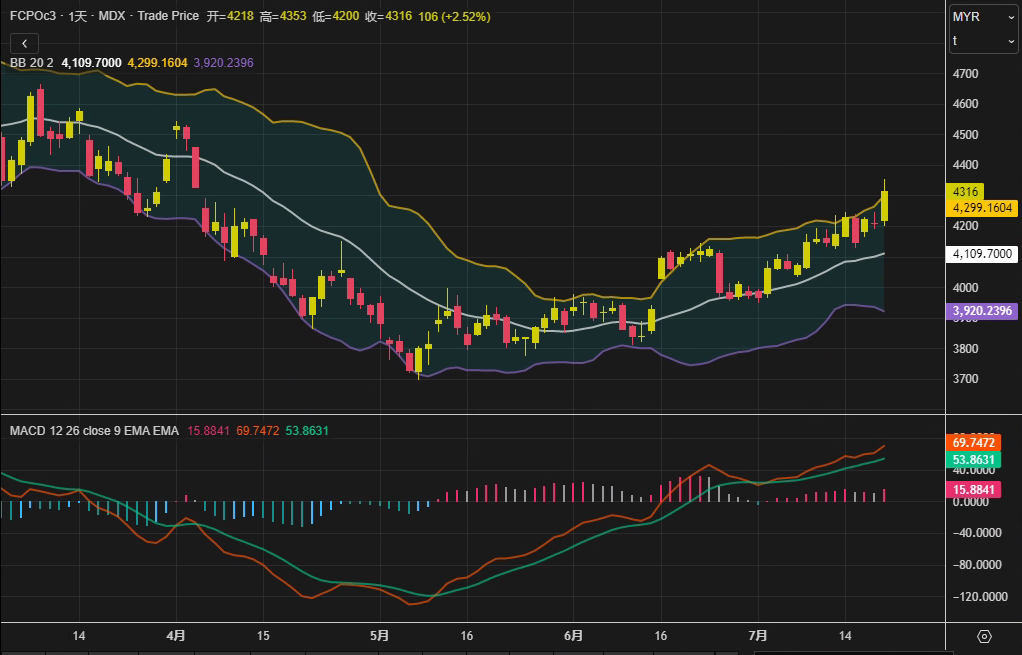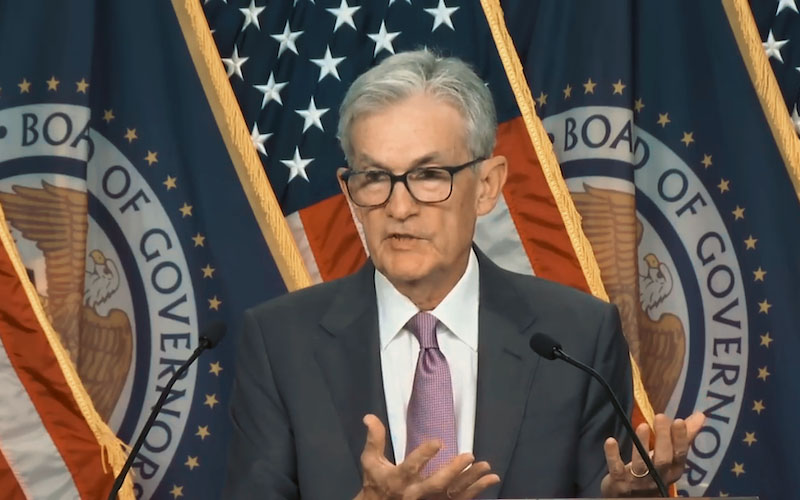3.4% weekly increase set off the market! Behind the "momentum accumulation" of palm oil, beware of the reversal of this key variable
2025-07-18 19:00:01

Multiple factors push up prices
The strong performance of palm oil this week is due to three factors: external oil linkage, exchange rate fluctuations and policy adjustments. Darren Lim, a commodity strategist at Singapore broker Phillip Nova, pointed out: "The simultaneous strengthening of Chicago soybean oil and Dalian palm oil and soybean oil futures, coupled with the depreciation of the ringgit under the expectation of a stronger US dollar, have jointly pushed up palm oil prices." Data shows that the main soybean oil contract (DBYcv1) of the Dalian Commodity Exchange rose 1.34% during the week, and the palm oil contract (DCPcv1) rose 2.28%; the soybean oil price of the Chicago Board of Trade (CBOT) rose 1% during the same period.
It is worth noting that the stabilization of crude oil prices provides potential support for palm oil biodiesel demand. Although the EU's new sanctions on Russia have caused fluctuations in the crude oil market, international oil prices have only closed slightly lower on a weekly basis, allowing palm oil to maintain its economic viability as a biodiesel raw material. According to data from the Indonesian Plantation Fund Agency, as of July 16, the country's biodiesel consumption has reached 7.42 million kiloliters, completing 47.5% of the 2025 allocation target. At the same time, it is expected that the annual palm oil tax will reach 30 trillion rupiah (about US$1.84 billion), which is enough to cover the demand for biodiesel subsidies.
A new variable in the supply-demand game
Despite the price strength, weak export data and rising policy costs in the short term pose concerns. Data from independent inspection company AmSpec Agri Malaysia showed that Malaysia's palm oil exports from July 1 to 15 fell 5.3% from the same period in June, while another agency Intertek Testing Services reported a 6.2% drop. At the same time, Malaysia raised its reference price for crude palm oil in August, raising its export tariff from 8.5% in July to 9%, which may further dampen buyers' willingness to purchase.
However, the market's reaction was limited, reflecting that investors are more focused on medium- and long-term structural factors. The steady progress of Indonesia's biodiesel consumption and the expectation that Malaysia's inventory may be under pressure due to the seasonal recovery of production have intensified the divergence between bulls and bears. Some traders believe that if the ringgit continues to weaken, palm oil prices may continue to receive marginal support.
Institutional views: Differences and consensus
Darren Lim of Phillip Nova emphasized: "The price gap between palm oil and competing oils is still a key indicator. The current price gap between soybean oil and palm oil is at the historical median. If it narrows further, it may stimulate demand for substitution." The head of Asian agricultural product research at a well-known institution warned of risks: "The increase in export tariffs and the recent weak shipping data may limit the increase. We need to be vigilant about technical corrections."
Looking ahead, the palm oil market may remain volatile at a high level in the short term. Despite the export pressure from the fundamentals, the resilience of crude oil prices, the support of biodiesel policies and exchange rate fluctuations still constitute the bottom support for prices. Traders need to pay close attention to the Malaysian inventory report next week and the implementation of Indonesia's taxation policy, as these factors may become key catalysts to break the current balance.

- Risk Warning and Disclaimer
- The market involves risk, and trading may not be suitable for all investors. This article is for reference only and does not constitute personal investment advice, nor does it take into account certain users’ specific investment objectives, financial situation, or other needs. Any investment decisions made based on this information are at your own risk.










